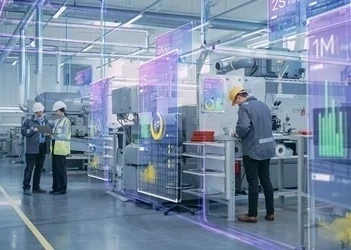PEX retrospective series: Trends in process mining
We look at how the field of process mining has progressed and how accurate past expert predictions have been on the technology
Add bookmark
The application of process mining has increased in prevalence since its inception in 1999, when the approach was first developed by Prof.dr.ir. Wil van der Aalst, a distinguished professor at RWTH Aachen University often referred to as ‘the godfather of process mining’. The rapid uptake of process mining can be attributed to its ability to analyze processes, enable data-driven decision-making on them and optimize business outcomes.
PEX Network has produced a range of content on process mining including multiple industry reports. In PEX Network’s Why process mining is the starting point for transformation and Process Mining Live 2020: How to become a process hero, industry experts from global organizations shared their predictions for the evolution of the process field over the coming years. Here we will recap these predications and apply hindsight to assess their accuracy.
Learn the ins and outs of process mining in our PEX Guide: What is process mining?
Process mining adoption has continued to accelerate
In the Why process mining is the starting point for transformation report published in 2021, James Dening, CEO of process mining platform provider Minit, shared the prediction that process mining adoption would continue to accelerate past the heights it had already reached.
“The analysts say that the market is going to be somewhere between 2.5 to three times the size it is now and I think for once they are possibly right,” remarked Dening. “I am seeing a real acceleration in the market of people implementing process mining across the organization. People know what it is, they recognize its value and they want to get involved.”
Process mining adoption statistics in 2022 support this prediction, with a Forrester study finding that 61 per cent of process excellence decision-makers will begin using or are evaluating the viability of process mining.
This represents a significant increase in process mining adoption from 2021, when The PEX Report 2021: Global state of process excellence found that only 16 per cent of decision-makers surveyed were planning to invest in process mining to drive operational excellence and transformation programs.
Data quality still needs to improve
In PEX Network’s Process Mining Live 2020: How to become a process hero report published in 2020, we summarized the lessons learned from the Process Mining Live 2020 event, analyzing the major challenges and areas of optimization for process mining.
In the report van der Aalst discussed the need for improved data quality if process mining were to continue on its upward trajectory.
In the past process mining has typically been applied to historic data, which is collected and analyzed in separate chronological stages. What van der Aalst was advocating for in the 2020 report was a focus on current data, which is continuously refreshed and analyzed. He believed that data quality would need to be a top priority for organizations to get the most out of process mining.
“This is an area where organizations still need to mature by focusing on predicted data and what your processes will look like in the future,” he noted at Process Mining Live 2020. “For this to be possible, the quality of data predictions needs to improve.”
This prediction has been supported by Tanu Mukherjee, senior director, global process excellence at PepsiCo, who spoke with PEX Network in 2022 ahead of her presentation at PEX Live: Process Mining 2022. She noted that data literacy is a must for process mining practitioners in 2022.
“No one can afford to be data- or technology-illiterate any longer. Gone are the days of whiteboarding process maps,” noted Mukherjee. “All of us have to understand our processes in real time with data that flows through the applications we use and learn to leverage process mining insights in our day-to-day operations.”
Process mining adoption continues to accelerate and as it does, practitioners will gain an increasingly advanced understanding of what it takes to make it work. One such revelation has been regarding the necessity of data literacy, which is pivotal to the success of process mining, and we will likely continue to see organizations taking steps to advance data capabilities.
Do you agree with these assessments regarding the trajectory of process mining? Let us know in the comments below.

























